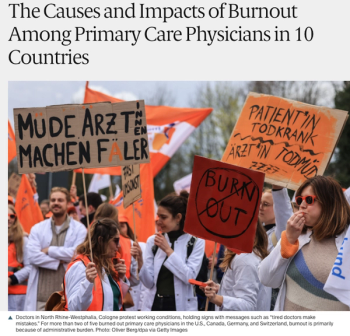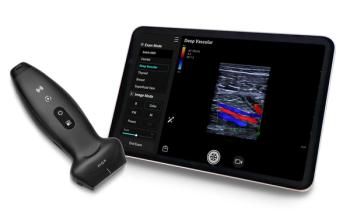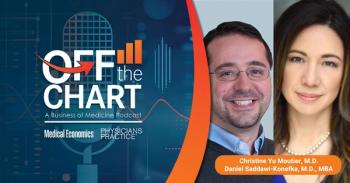
Pay, productivity up for doctors in hospital-owned practices
But rising costs offset some of the gains, report finds.
Doctors in hospital-owned medical practices were more
The median number of physician work relative value units (
Net revenue per physician wRVU for the quarter was $107, down 1% from the fourth quarter of 2020, while compensation per wRVU dropped by 11%, to $58.15, according to the report.
At the same time, the total direct expense per physician FTE was $955,281, up 16% increase from fourth quarter 2020 and 9% from the third quarter of 2021. The increase occurred despite a drop in clinical and front desk staffing levels, which saw a 17% decline in support staff FTEs per 10,000 wRVUs compared to the same period in 2020.
“Physician expenses rose in the fourth quarter across all specialty cohorts,” Matthew Bates, Kaufman Hall managing director and physician enterprise service line lead said in an accompanying news release. “Higher volumes, coupled with labor shortages, are contributing to rising costs,” he added.
Those costs were reflected in the median investment/subsidy per physician FTE, which rose to $263,000, a 10% increase from 2020’s fourth quarter and 6% from the third quarter of 2021, according to the release. The median investment/subsidy per physician, meanwhile, rose by 10% from fourth quarter 2020 to $263,000
Kaufman Hall also released its National Hospital Flash Report, which showed hospital margins for the year at 2.5%, compared to 0.9% for 2020, not including funding from the Coronavirus Aid, Relief and Economic Security (CARES) Act. Margins were 4% in 2021 and 2.8% in 2020 with CARES funding included, according to the news release.
Competition for employees pushed up expenses even though staffing levels were lower, according to the release. Labor expense per adjusted discharge was up 19% for the year over 2019, while total expense per adjusted discharge grew by 20% compared to pre-pandemic levels.
"As we enter the third year of the pandemic, hospital and health system leaders face worsening labor shortages that are driving up costs across healthcare,” Erik Swanson, Kaufman Hall senior vice president of data and analytics said in the release. “Organizations are having to pay high salaries to attract the workforce they need, while also paying more for drugs and other supplies. Managing through these challenges will require organizations to build new levels of agility and efficiencies.”
Newsletter
Stay informed and empowered with Medical Economics enewsletter, delivering expert insights, financial strategies, practice management tips and technology trends — tailored for today’s physicians.


















